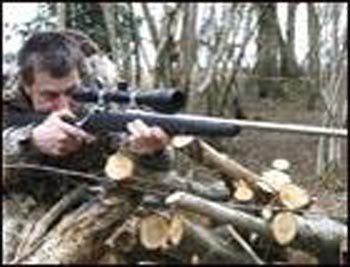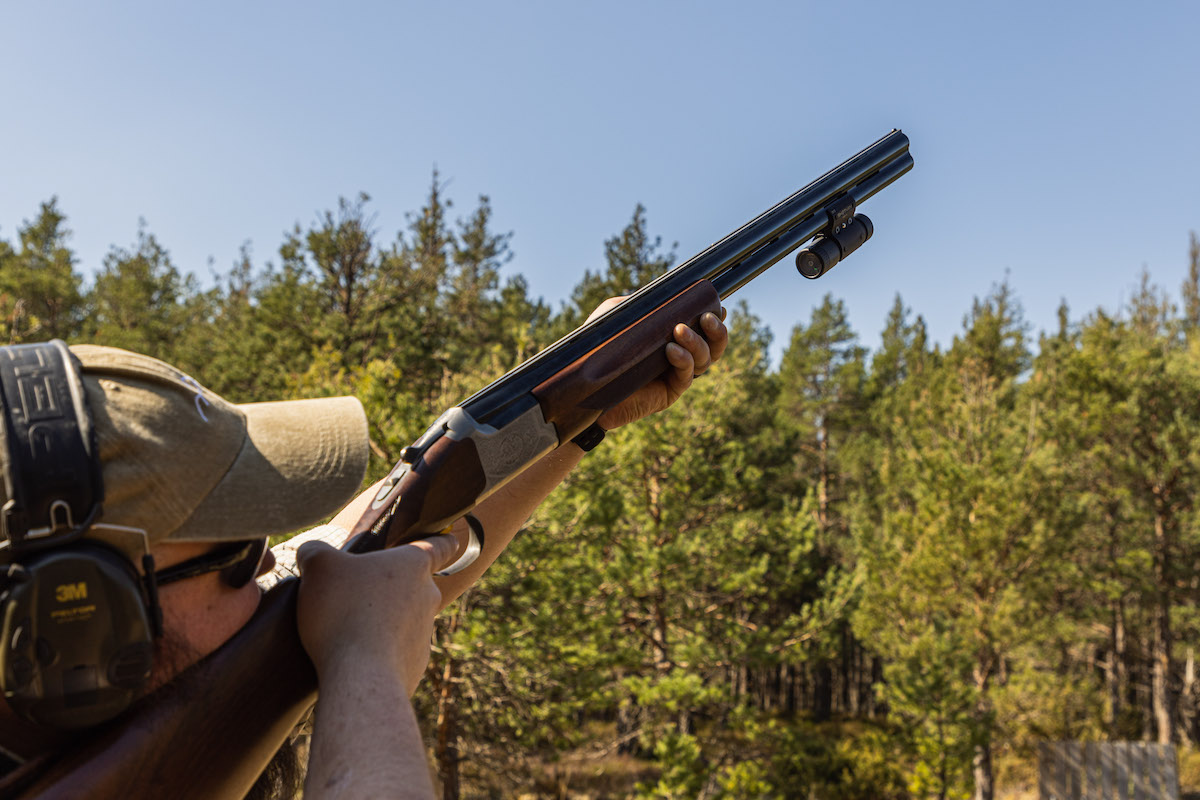Savage Model 16 .243 rifle review

Savage Model 16 .243 rifle review
Savage Model 16 .243 rifle review.
Originating from the US, Savage rifles have always occupied in my mind that niche of good-value rifles that shoot far better than their price suggests.
But many people overlook such marques in favour of more elaborate and expensive models, in the hope of better quality. Wishing to address some of these issues, I was delighted when Jamie Garland, of Garlands, sent me a Savage Model 16 synthetic .243 for test.
For £750, you get a synthetically stocked stainless steel sporter rifle, with extra features such as an AccuTrigger and three-point safety. Savage has several unique and important design characteristics that make its rifles so accurate, but it has never made a song and dance about them. The Model 16 is a pure stalking rifle: its synthetic stock and stainless steel construction allow it to endure the worst of the weather and to take quite a beating. Savage always produces a solid rifle; some say its products lack finesse, but any genuine stalker will be impressed with the no-nonsense stalker-friendly attributes.
Solid stock design
The stock is built as a two-part injection-moulded synthetic unit that is seriously practical. Most stalking exploits usually occur in poor weather and with this remit, any weather-abating stock that ensures a constant zero or accuracy potential can help. True, the stock is two-part and a jointing seal is visible along the length of the horizontal axis, but the injection-moulded chequering is sharp and grippy, and the whole stock design is solid and comes fitted with a rubber recoil pad and integral quick-detachable swivel studs as standard. The overall black-matt synthetic look is not to everyone’s taste, but it is a practical addition, ensuring the best and most consistent accuracy from any rifle.
Stylish finish
The Savage’s overall finish is very good and – dare I say it – stylish. Most stainless steel finishes are either so reflective as to be impractical in the shooting field or dull and rough-looking, belying the quality beneath. The Savage, however, has a dense, practical satin-like effect that reduces reflective qualities and enough overall smoothness and continuity to look not only practical, but also nicely finished – and an integral part of the overall design.
Free-floated adaptability
The barrel is 22in long and has a generous 1in girth, which tapers to 0.580in at the muzzle to produce a barrel stout enough for at least five-round consistent accuracy before becoming too warm. It is short enough for use in confined woodland and, if a sound moderator is fitted, maintains a good balanced feel when mounted in the arm. Being fully free-floated, the Savage offers maximum advantage with regard to changes in the weather and zero point-of-impact change. To me, this is more important than initial accuracy – consistent inch-accuracy is all that is needed to topple a stag in September, but if the weather changes and moisture absorption causes a wood stock to swell, then a shift in initial zero may cause a missed shot. No chance of that with the Savage – I tested and shot it in snow in Scotland, then brought it in to a covered, heated area and re-shot a test group. Accuracy did not vary more than 0.5in at 100 yards, which is excellent.
Action and safety
Where the Savage comes to life is in the action and trigger areas. The action is a single piece of tubular stainless steel that not only has incredible strength, but also allows rigidity to achieve optimum accuracy potential. The bolt has a unique dual forward-locking lug system. The tandem arrangement allows precise rotational lock-up on operation of the bolt from the foremost lugs, while the twin rear-sliding lugs act as a guiding locational force to ensure precise lock-up on closing the bolt. The 0.690in girth of the bolt is substantial enough to ensure a non-torque free-firing operation and the logo of Savage, with its dressed Indian motif, is etched on to its 6in body. Lock time – the time from thinking about firing to the moment the firing pin hits the cartridge primer – is very fast. This eliminates any problems caused by human error.
The bolt handle has a straight-up and short-throw action, however the impressed chequered imprint looks cheap and it is. The safety catch is situated at the rear of the action and is easily operated, with minimal force from the thumb, in a sliding fashion, shotgun-style. In its foremost position, a red dot appears and means the rifle can be fired; middle position and the rifle is safe, but you can still unload the magazine, as the bolt is still operational. The final position, rear-most, locks the trigger sear and bolt. It is comprehensive, simple and, combined with the extra-safe trigger mechanism, wins top marks for shooter safety.
Predictable trigger
The trigger mechanism feature is what distinguishes the Savage Model 16. Savage saw a way around the ludicrous situation regarding trigger pressures in the US (where legally trigger pressures must be heavier than here) by devising a unique and safe alternative. This offers the stalker total reliability, with a low and ample ‘feel’ trigger, without delving into the territory of unsafe adjustment. Dubbed the Accutrigger system, you have a clean, precise and predictable trigger let-off with a foolproof safety feature. Unlike most US-made rifles, the Savage trigger can be adjusted to suit the owner; a unique safety bar, or interrupt system, ensures a safe let-off, however much the trigger is adjusted. This is achieved by having an integral skeletonised false trigger, called the AccuRelease, preset within the trigger blade, which has to be depressed at the same time as the trigger. If this is not accomplished then a safety bar from the trigger drops down to prevent firing. It is a reliable system that also allows the stalker to adjust the trigger as desired. The adjustment range weighs between 1.5lb and 6lb, allowing stalkers to customise to their preference. Good on Savage for producing this system, as it barks in the face of more conventional designs.
Detachable magazine
A good addition is the four-shot detachable magazine system, made from a blend of stainless lower and hard-blue steel upper. With a capacity of four shots in .243 calibre, the large and accessible release lever is easily located at the front of the floor plate assembly. It is a double-stack design, but with a single-fed column so as to locate accurately the cartridge when it is cycled by operation of the bolt. The polymer load ramp helps to eliminate damage to the nose of the bullet, though ejection of the magazine is brisk, so mind you don’t drop it.
Results on the range
As far as accuracy testing on the range is concerned, the Savage turned in some impressive groups with reloaded ammunition, and shot well below the 1in standard group at 100 yards with a variety of factory ammunition.I tested Remington, Winchester and Federal factory loads, with bullet weights ranging from 55-grains up to 100-grains. The Savage digested them all, with good to excellent results. The Remington 75-grain AccuTip ammunition shot particularly well in this rifle, with some nice 0.75in groups, and I could only better this with a handload of 42-grains of RL22 and Nosler 95-grain Ballistic Tip bullets, which gave slightly more than 3,000ft/ps velocity and achieved a small 0.5in group. Scope mounting was via a drill and tap system, for which many makers offer a base mounting system. I chose the excellent Warne base and mounting system, which raised no negative shooting problems.
The Savage Model 16 has been one of the best all-round, most consistent and accurate riles I have tested to date, which is strange as more prevalent opposition normally takes the praise. Having started with a budget rifle profile, Savage has now come into its own and shooters appreciate the trouble the company has put in to achieving an accurate, value-for-money, bombproof and weatherproof rifle for less than £750. The AccuTrigger system puts the triggers of other manufacturers in the shade when it comes to safe handling, feel and execution.
For more information, contact Garlands, Tel 01827 383300.








